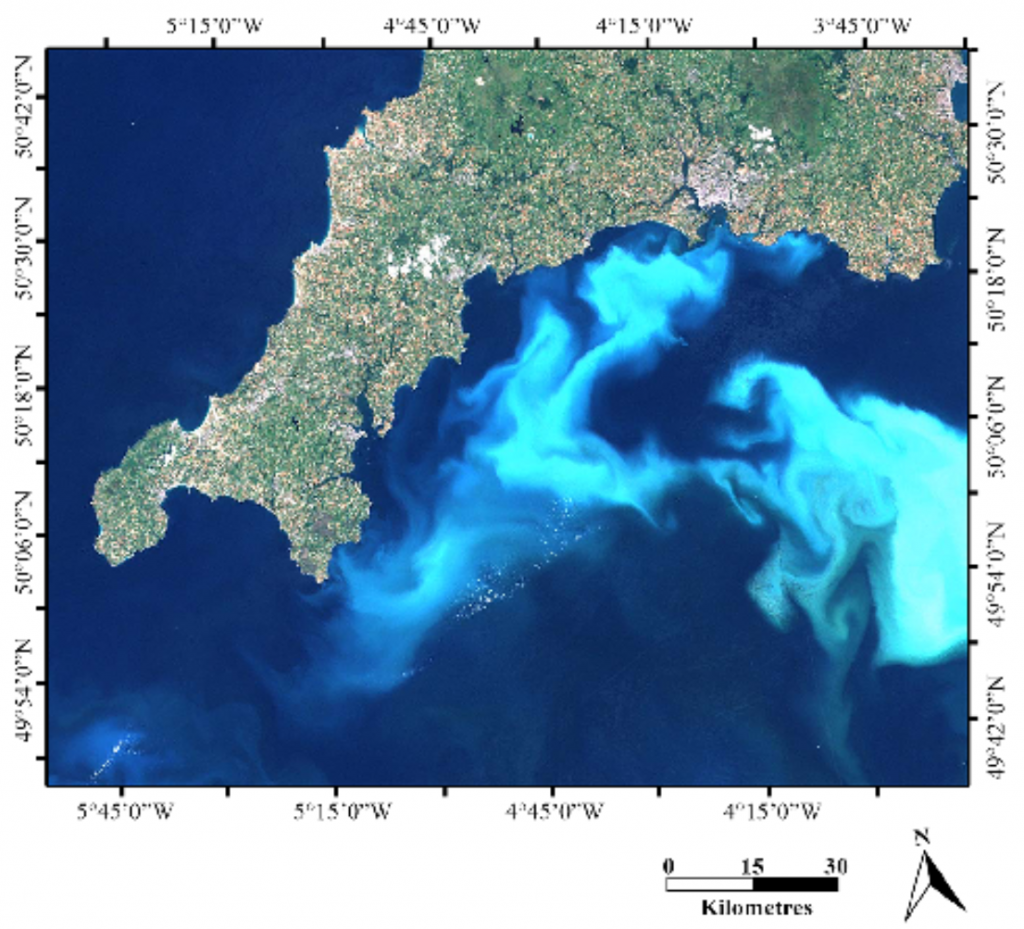On land, it is easy to identify and recognise the signs of Spring. We start by waking up each morning to an increasingly early sunrise, accompanied by the gorgeous Dawn Chorus. Outside we are welcomed by blossoms, bumblebees and swallows. But what about along our coastlines? What seasonal changes take place beneath the waves?
Well, in our oceans another type of bloom is blossoming; the annual ‘Phytoplankton Spring Bloom’. The Greek origins of the word phytoplankton translate to ‘Plant made to Wander or Drift’. You can find a diverse array of these single-celled organisms, from long necklace like cyanobacteria that photosynthesise to chalky coccolithophores that paint our Jurassic Coast dazzling white. Phytoplankton depend on the availability of carbon dioxide, sunlight and nutrients for survival and reproduction. As more light hits the surface of the sea, surface waters start to slowly warm and nutrients become abundant in the top layers of the ocean, these spectacular plankton reproduce and double in numbers over a matter of days – a blanket of clouds on the ocean surface.

An Underwater Feast
These spring blooms are a critical moment for marine species. As the foundation of marine food webs, the timing of these blooms plays a large role in maintaining marine ecosystems. The result? An abundance of small feeder fish. Species of fish that migrated away, now start to return, including sandeels, plaice, mackerel and sprats. This is great news for our resident and newly arriving cetaceans! Many of the larger species of whale we might spot off the UK coastline, who arrive here for various reasons, find themselves as we might when walking into an all you can eat buffet.
So as late spring moves into summer, we are hopeful to start seeing our wonderful visitors chomping down on our summer delights.
It’s all about the vision
Away from the coastline, scientists came up with a way of determining the amount of phytoplankton in the ocean. The ‘Secchi Disk’ was thought up in 1865, is still used today – a white disk, attached to a measuring tape, is lowered into the water. The depth at which the disk disappears from sight, the Secchi Depth, is recorded. The clearer the water – the less phytoplankton present. In this manner, fluctuations of phytoplankton abundance can be measured and analysed.
This is a good way of measuring water clarity wherever you are. Water clarity by the coastline can be influenced by a number of factors such as; water turbidity; erosion; contamination and eutrophication (harmful algal blooms due to nutrient run-off from fertilised land).
Try this at home
Why not try making your own Secchi Disk to contribute to scientific research and knowledge?
You will need:
- A printer or a drawing of the secchi disk image
- A local river or cove/bay i.e. still water – OR even better, if you sail, take it out with you if you can!
- Cardboard, hole punch, metal washer and string
- A laminator would be great to preserve the disk
- Tape measure
Get the Secchi App and input your findings, to help contribute to a global citizen science programme.
Emma
Education and Outreach Assistant
References
Emberton, S., Chittka, L., Cavallaro, A. and Wang, M., 2016. Sensor capability and atmospheric correction in ocean colour remote sensing. Remote Sensing, 8(1), p.1.
























